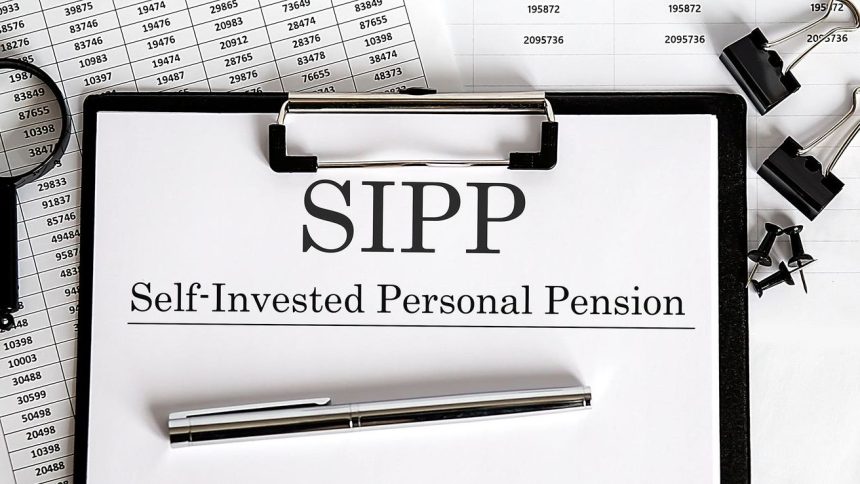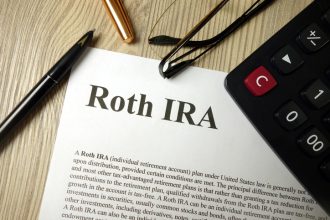A self-invested personal pension (SIPP) is a type of pension plan offered in the United Kingdom that allows individuals greater control over their retirement savings by letting them choose and manage their investments. Unlike traditional pension plans, SIPPs provide access to a wide range of investment options. This flexibility can help tailor a retirement strategy to individual needs and risk preferences. SIPPs may be particularly appealing to those who wish to take an active role in managing their retirement funds while potentially benefiting from tax advantages.
If you need help planning for retirement, managing your investments or building a financial plan, consider connecting with a fiduciary financial advisor.
What Are SIPPs and How Do They Work?
A SIPP is a type of retirement plan that gives U.K. citizens and residents the ability to invest in stocks, bonds, mutual funds and real estate. SIPPs provide flexibility and control, enabling you to tailor your investment strategy to your personal financial goals and risk tolerance.
SIPPs are regulated by the Financial Conduct Authority (FCA), ensuring a degree of protection for investors. Funds in a SIPP can typically be accessed from the age of 55. Historically, 25% of pension funds were available to be taken as a tax-free lump sum, and the remainder used to provide a retirement income through drawdown or annuities. However, changes were made in 2024 to how these pensions are taxed.
SIPP Contribution Limits

For the 2023/24 tax year, the standard annual allowance is £60,000. This includes all contributions made by you, your employer and any third party. Contributions exceeding this limit may be subject to a tax charge, reducing the tax benefits.
Prior to April 6, 2024, there was a £1,073,100 a limit on the amount of money that could accumulate in pension savings before taxes were triggered. This was known as the lifetime allowance. Exceeding this threshold would result in a tax charge of 25% on the excess if taken as income or 55% if taken as a lump sum.
However, the lifetime allowance was done away with and replaced with what’s known as the lump sum allowance (LSA) – a £268,275 cap on tax-free cash from all pension sources – and the lump sum death benefit allowance (LSDBA), a £1,073,100 limit on both lifetime withdrawals and death benefits.
The amount you can contribute to a SIPP is also constrained by your earnings. You can contribute up to 100% of your relevant U.K. earnings, capped at the annual allowance. For non-earners or those earning less than the annual allowance, the maximum personal contribution is £3,600, which includes government contributions that are known as “tax relief.”
Who’s Eligible for a SIPP?
A SIPP is available to U.K. residents who are under the age of 75. To contribute to a SIPP, individuals must have relevant U.K. earnings such as salary or self-employment income. There is no minimum age to open a SIPP, making it accessible to minors as long as contributions are made on their behalf by parents or guardians.
American citizens living in the UK and expatriates can also qualify for a SIPP, provided they meet the same criteria as U.K. residents. This includes having relevant U.K. earnings and being under the age of 75. However, Americans need to be cautious of the tax implications in both the U.K. and the U.S., as the IRS may not recognize the tax benefits of a SIPP.
Non-U.K. residents, including expatriates who have left the U.K., can still maintain and contribute to their existing SIPP accounts. However, they will not receive U.K. tax relief on their contributions unless they return to U.K. residency. It is possible to open a SIPP as a non-U.K. resident, but contributions will not benefit from U.K. tax relief unless the individual is a crown employee or the spouse of one.
Tax Treatment in the UK

In the U.K., contributions to a SIPP are eligible for tax relief. For every £80 contributed, the government adds £20, assuming the individual is a basic rate taxpayer. Higher and additional rate taxpayers can claim further tax relief through their self-assessment tax return. Investment growth within a SIPP is free from U.K. capital gains tax and income tax, making it an attractive option for long-term retirement savings.
Following the abolition of the LTA, individuals can now receive a maximum of £268,275 tax-free from their pension savings, which was previously tied to 25% of the LTA. Any lump sums taken beyond this threshold will be taxed at the individual’s marginal rate. For lump sum death benefits, a new limit equal to the previous LTA (£1,073,100) has been set, with any excess taxed at the recipient’s marginal rate. This change simplifies the tax treatment but also places a cap on the amount of tax-free benefits available.
Tax Treatment in the U.S.
For U.S. taxpayers, SIPPs are generally treated similarly to individual retirement accounts (IRAs). Contributions to a SIPP by an American do not receive U.S. tax relief and investment growth is subject to U.S. taxation. Upon retirement, withdrawals are taxed as ordinary income in the U.S., and it’s essential to report these correctly to avoid penalties.
Individuals subject to both U.K. and U.S. tax systems must navigate complex regulations. They need to ensure compliance with both HM Revenue and Customs and the IRS, potentially seeking advice from a financial advisor with expertise in cross-border tax issues.
Bottom Line
Self-invested personal pensions (SIPPs) offer U.K. residents a unique opportunity to take control of their retirement savings with a broad range of investment options and potential tax advantages. However, managing a SIPP requires a thorough understanding of contribution limits, eligibility criteria, and the implications of both U.K. and U.S. tax regulations for expatriates.
Retirement Planning Tips
- Deciding when to retire often comes down to figuring out when your savings, Social Security and other assets will produce enough income to cover your living expenses. SmartAsset’s retirement calculator can help you estimate how much income your assets will generate and whether you’ll need to save more to meet your expected expenses.
- A financial advisor can help you plan and save for retirement. Finding a financial advisor doesn’t have to be hard. SmartAsset’s free tool matches you with up to three vetted financial advisors who serve your area, and you can have a free introductory call with your advisor matches to decide which one you feel is right for you. If you’re ready to find an advisor who can help you achieve your financial goals, get started now.
Photo credit: ©iStock.com/Iryna Drozd, ©iStock.com/JohnnyGreig, ©iStock.com/agrobacter
Read the full article here
















